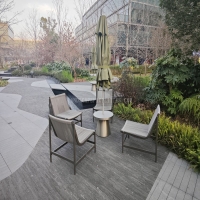Welcome to the website for landscape facilities products and knowledge.
How does the bin compare to traditional waste bins in terms of waste containment and odor control?
When it comes to waste management, modern bins have revolutionized the way we handle trash, offering significant improvements over traditional waste bins in both waste containment and odor control. Traditional bins often struggle with leaks, spills, and unpleasant smells, especially when dealing with organic waste or liquids. In contrast, modern bins are designed with advanced materials and sealing mechanisms that prevent leaks and contain odors effectively.
One key advantage of modern bins is their airtight sealing technology. Unlike traditional bins, which may have loose-fitting lids or gaps, modern bins feature tight seals that trap odors inside. This is particularly beneficial in kitchens or high-traffic areas where smells can quickly become a nuisance. Additionally, many modern bins come with activated carbon filters or antimicrobial coatings, further enhancing odor control and hygiene.
Waste containment is another area where modern bins shine. Traditional bins often lack durability, leading to cracks or breaks that result in messy spills. Modern bins, however, are constructed from robust materials like stainless steel or high-density plastic, ensuring long-lasting performance. Some models even include liners or compartments to separate different types of waste, reducing cross-contamination and improving overall cleanliness.
In summary, modern bins outperform traditional waste bins by offering superior waste containment and odor control. Their innovative designs and advanced features make them a smarter choice for households and businesses alike, promoting a cleaner and more pleasant environment.
Related search:

Recommendation
Metal structure rattan chair without armrests for single person, with woven seat and backrest.